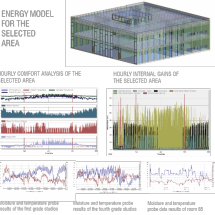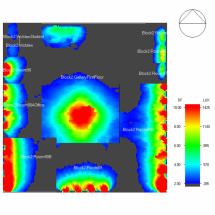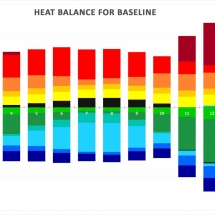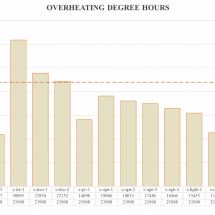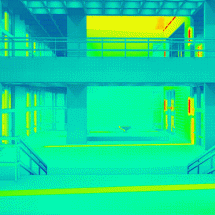Environmental Performance Assessment
- English
- Türkçe
In the context of Modern heritage buildings, there is an urgent need to restore these buildings into a high-performance state while preserving their heritage values. Mid-century modern buildings, due to the sheer size of their stock and their current state of maturation, have a great potential for reducing the environmental impact[1]. The Modern era, when energy was fossil-based, inexpensive, and accessible, produced buildings that relied on a great deal of energy to construct and operate. Moreover, building codes (such as the International Building Code (IBC) of the International Code Council (ICC) in the US or the Energy Performance of Buildings Directive (EPBD) of the European Union) that regulate energy use and environmental impact of the built environment were very few, if not non-existent, at the time. This results in higher energy consumption, higher anthropogenic environmental impact and lower occupant comfort.
As a result, many Modernist buildings constructed during 1950s-1980s are unsustainable, not energy-efficient and sometimes practically uninhabitable. A conservation planning process that focuses on environmental performance mandates that conservation interventions take into account sustainability issues and meet environmental targets for the current and future climate. In this direction, building energy-efficiency, reducing environmental impact and raising occupant comfort (especially for those buildings that are still being actively used) need to be considered through quantitative analysis.
Environmental assessment procedures of the Getty Project for the Faculty of Architecture Building aim to combine various analytical methods to assess the current state, including field measurements for indoor air quality and observations, thermographic imaging and building energy simulation-based analyses. The results suggest that:
- the drastic increase in the number of occupants puts strain on the daily use of building spaces due to indoor comfort problems,
- the lack of environmental and energy-efficient sensibilities, paralleled with increased occupancy, results in poorly performing systems and facades,
- the global warming trend due to the climate change is expected to worsen indoor overheating for extended periods of time around summer, especially in south and west-facing spaces
- interventions that can improve building performance can be taken as an opportunity to restore building components into their original form,
- invisible interventions that take into account the building's heritage values include roof repair, improved glazing performance, improved natural ventilation, envelope repair for uncontrolled infiltration, phase change materials that can stabilize indoor air temperature and improved solar control.
[1] Brandt, M. T., "Buildings and Stories: Mindset, Climate Change and Mid-Century Modern," Journal of Architectural Conservation 23, no. 1–2 (May 4, 2017): 36–46, https://doi.org/10.1080/13556207.2017.1327195.

